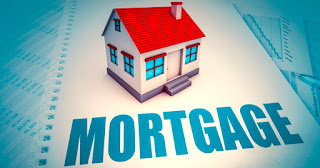Alternatives to bridge financing.
Bridge loans give you the capital you need to make a down payment on your next home. The amount you can borrow depends on the equity you've built up in your current home, which serves as collateral for the loan. If you default, the lender can take your home and sell it to recoup their investment.
You might consider a bridge loan if you want to buy a home without making an offer that's contingent on the sale of your current property. In that case, it's best if you're confident that your current home will sell quickly. Otherwise, you'll be stuck paying two mortgages and a loan until it does.
Either way, you'll have to show that you qualify for all three loans, and the cost of bridging finance can be high. Even relatively cheap bridging loans tend to involve high fees and above-prime interest rates. And if you default, you could lose your new home, your current home, or both.
If there's any question in your mind about whether you can afford a bridging loan, you're better off looking for an alternative.
Government Down Payment Assistance Programs
The federal government and many state governments offer down payment assistance to help qualifying people to buy homes.
The primary federal program is the Down Payment Assistance initiative from the National Homebuyers' Fund, which covers down payment and closing costs worth up to 5 percent of a borrower's mortgage total. Funds from this program function as a gift or a zero-interest second mortgage forgiven after three years.
Bridge financing in CanadaCredit score and debt-to-income requirements are flexible and candidates do not have to be first-time homebuyers. State governments also have down payment assistance programs. These tend to fall into one of four categories:
Standard loans that you repay alongside your mortgage
Deferred-payment loans that you pay in full after you sell, move, refinance, or pay off your mortgage
Loans that are forgiven unless you sell, move, refinance, or pay off your mortgage before the forgiveness date
Grants that you don't ever need to repay.
Different types of programs are available in different states. Income limits, credit requirements, and other qualifications vary by program.
Your 401k or Roth IRA
If you don't qualify for assistance but have a 401k or Roth IRA, you can use some of that money to fund your down payment. Exactly how you do it depends on which account you have.
With a 401k, you don't want to withdraw funds early because you'd end up paying penalties. What you can do is borrow up to half of your balance or $50,000, whichever is less. You do pay interest, but it goes into your own account.
A Roth IRA lets you withdraw your contributions at any time, tax-free. But if you're under age 59 ½ and aren't a first-time home buyer, which you probably aren't if you're considering a bridge loan, you'll pay penalties if you withdraw investment earnings.
You pay penalties for early withdrawals of contributions and earnings with a traditional IRA, so stay away from that one if you're not a first-time buyer.
Your Stock Holdings
If your asset portfolio includes stocks, you can use them to cover a down payment. There are two basic strategies, you can either sell the stocks outright, or get a loan with the stocks as collateral.
The first strategy tends to be fairly straightforward, but you may want to consult with a financial advisor to determine which stocks to sell first. Borrowing against your stocks is slightly more complicated.
First of all, you can only borrow a percentage of market value for the stocks that you use to get the loan. Between 50 percent and 95 percent is a typical range. You deposit those stocks into an account on which your lender has a lien. You write a check or wire funds against the borrowable amount when you want to access the money.
The interest rate can be lower on these loans than on other lending options, but be careful. If the market value of your stocks decreases, so will the amount you have available to borrow. And if it decreases too much, the lender might force you to liquidate or demand a more valuable stock as collateral.
A Home Equity Line of Credit
Your home equity is another non-liquid asset that you can tap to make a down payment. A home equity line of credit, more commonly known as a HELOC, lets you borrow against that equity up to a specified amount, as with a securities-backed loan. The fees and interest rates are also lower with this option than with a bridge loan.
A HELOC lets you take out as much as you want up to an approved maximum, and you can do with that money what you will. For example, you could borrow a certain amount to improve your current home so it sells faster, then take out another sum to pay the down payment on another house.
The downside? You can't take out a HELOC on a house that's for sale. Lenders know that you'd be paying it back quickly and they'd make less profit. So if your property is already on the market, keep looking for options.



Comments
Post a Comment